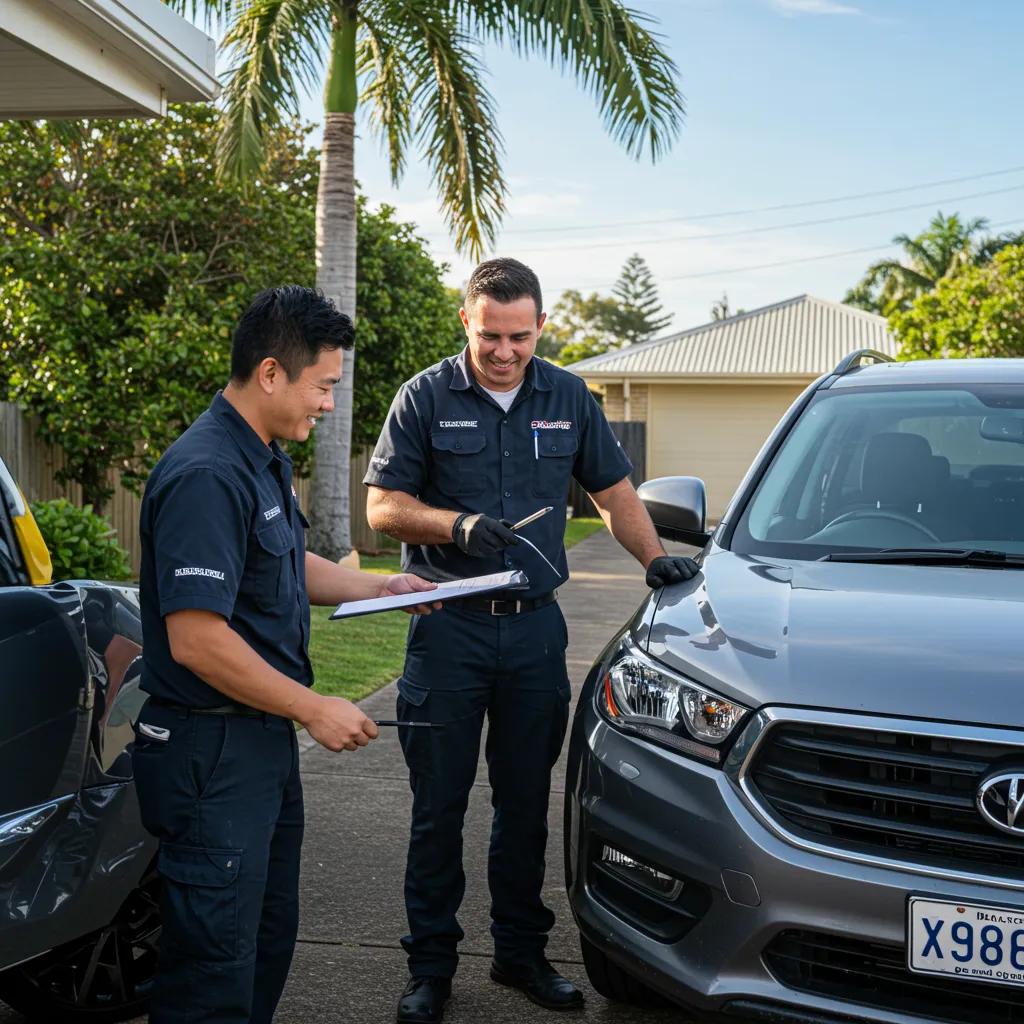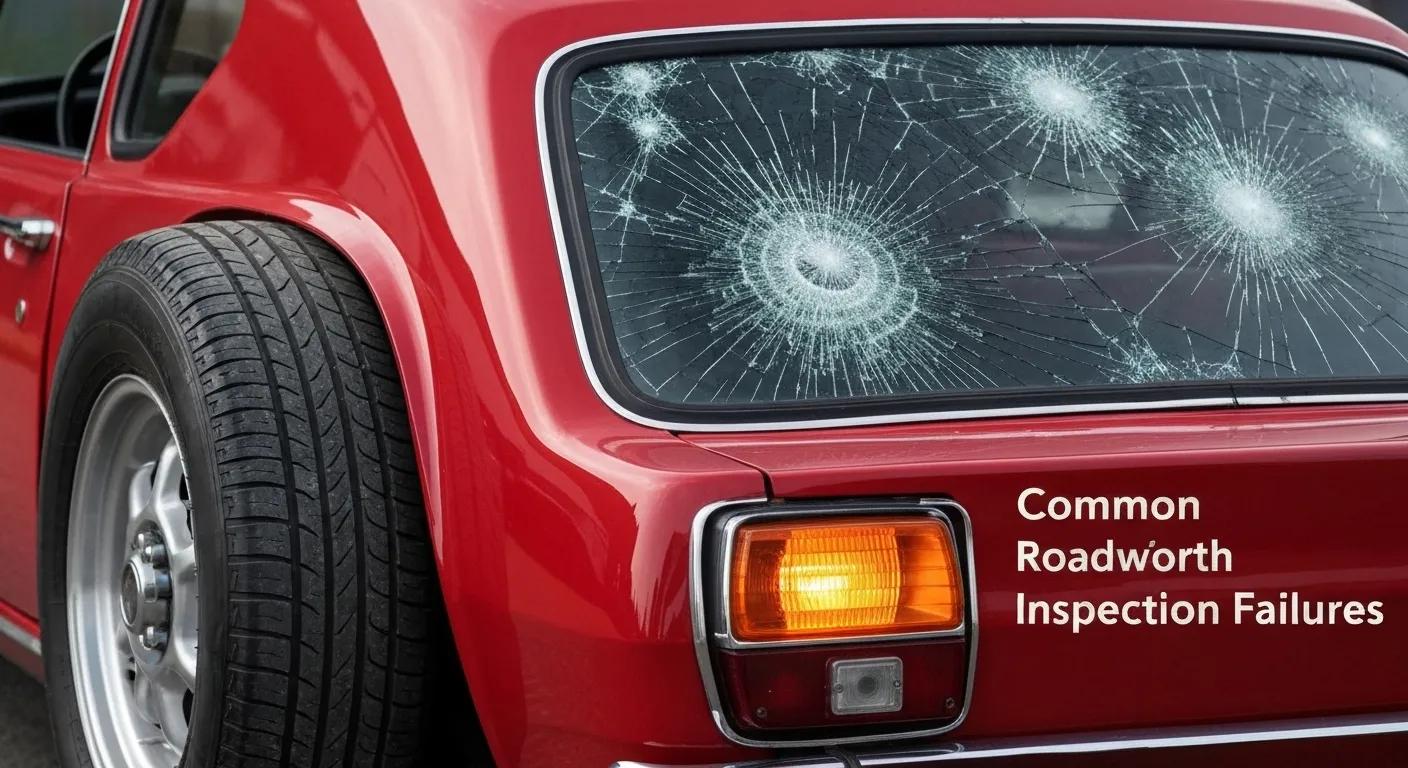
Article:
Roadworthy Certificates on the Gold Coast: What You Need to Know Before Selling or Registering Your Car
Obtaining a Queensland Safety Certificate—commonly called a roadworthy certificate—is essential before selling, transferring or re-registering any vehicle on the Gold Coast. Without a valid certificate you could face refused registration, wasted time and potential fines. This article explains what a roadworthy certificate means in Queensland, breaks down the mobile inspection process, uncovers common failure points, compares requirements by vehicle type and shows you how to book with Roadworthy Gold Coast’s mobile service—all in one concise guide.
What Is a Roadworthy Certificate and Why Is It Required on the Gold Coast?
A roadworthy certificate (Safety Certificate) verifies that a vehicle meets Queensland’s minimum safety standards, helping to protect drivers and other road users. By confirming critical components such as brakes, tyres and lights are legal, this certification prevents unsafe vehicles from changing hands. For example, a car owner selling to a private buyer must present a current certificate so the Department of Transport and Main Roads can approve the transfer.
What Does a Roadworthy Certificate (Safety Certificate) Mean in Queensland?
In Queensland, a Safety Certificate confirms compliance with requirements set out by the Department of Transport and Main Roads. It is issued by a licensed mechanic at an Approved Inspection Station (mobile or workshop) and forms part of the registration or sale paperwork. This legal document is mandatory for any change of ownership or re-registration.
Queensland Road Safety Standards
Queensland’s Department of Transport and Main Roads sets the minimum safety standards for vehicles, which are assessed during roadworthy inspections. These standards ensure that vehicles meet the necessary safety requirements to protect drivers and other road users. Compliance with these standards is essential for the safety of all road users.
Department of Transport and Main Roads, Queensland Government
This citation supports the article’s explanation of the role of roadworthy certificates in ensuring vehicles meet Queensland’s safety standards.
Why Do You Need a Roadworthy Certificate Before Selling or Registering Your Vehicle?
You must supply a current Safety Certificate when you:
- Transfer ownership of a privately sold vehicle.
- Re-register a lapsed registration.
- Transfer an interstate vehicle onto a Queensland plate.
Meeting this requirement avoids registration refusal, protects buyers and demonstrates that your vehicle is safe for the road. Understanding these obligations leads into how a mobile inspection can simplify the process.
How Long Is a Roadworthy Certificate Valid in Queensland?
A Safety Certificate is valid once issued, but conditions apply to different sellers. Below is a summary of validity periods:
| Vehicle Category | Validity Period | Conditions |
|---|---|---|
| Private sale (owner) | Until vehicle sold | Must inspect within 2 months/2 000 km of sale |
| Licensed dealer sale | 3 months or 1 000 km | Applies to dealer-held stock |
These timeframes ensure that certificates remain current when a vehicle changes hands, paving the way to understanding how a mobile inspection actually works.
How Does the Mobile Roadworthy Inspection Process Work on the Gold Coast?

A mobile roadworthy inspection brings the mechanic to your door, saving you time and effort. The process typically unfolds in three key stages to ensure full safety compliance before certificate issuance.
Mobile Roadworthy Inspection Process
Mobile roadworthy inspections offer a convenient way to have vehicles assessed for safety compliance. The process typically involves booking, on-site inspection, and certificate issuance, streamlining the process for vehicle owners. This approach saves time and effort compared to traditional workshop inspections.
Roadworthy Gold Coast
This citation supports the article’s description of the mobile roadworthy inspection process and its convenience for vehicle owners.
What Are the Step-by-Step Stages of a Mobile Vehicle Inspection?
A mobile inspection proceeds as follows:
- Booking Confirmation – You choose a convenient time and location via phone or online booking form.
- On-Site Inspection – A qualified mechanic assesses brakes, tyres, lights, steering, suspension, windscreen and seatbelts.
- Certificate Issuance – If the vehicle meets all criteria, a Safety Certificate is issued on the spot; if not, defects are documented for rectification.
This clear workflow demonstrates how easy it is to get certified without detours, leading into the exact parts we check.
Which Vehicle Components Are Checked During a Roadworthy Inspection?
Before issuing a certificate, inspectors examine:
- Tyres for legal tread depth and condition
- Brakes for pad, disc and hydraulic function
- Lights for alignment, operation and lens integrity
- Steering & Suspension for play, wear and fluid leaks
- Windscreen & Mirrors for cracks or distortion
- Seatbelts & Seats for secure mounting and correct restraint
These checks protect against basic failures, which we explore next to help you prepare.
What Happens If Your Vehicle Fails the Roadworthy Inspection?
If defects are found, you receive a written notice detailing faults and a 14-day rectification period. After repairs, you can book a free re-inspection for the failed items. This ensures every issue is corrected before re-assessment, so you can confidently proceed with sale or registration.
What Are the Common Reasons for Failing a Roadworthy Inspection on the Gold Coast?

- Worn Tyres and Brake Pads reducing grip and stopping power
- Burnt-out Lights or Damaged Lenses compromising visibility
- Windscreen Chips or Cracks obstructing driver view
- Steering Play or Suspension Wear affecting handling and stability
- Engine Leaks creating fire hazards and oil slicks
Knowing these failure points leads into detailed causes per system for faster pre-inspection fixes.
How Do Tyres and Brakes Cause Roadworthy Failures?
Tyres with tread below 1.5 mm or sidewall damage fail immediately, while brake pads worn to metal or leaking fluid invalidate stopping performance. Ensuring correct tyre pressure, minimum tread depth and full-thickness pads keeps you within compliance.
What Lighting and Windscreen Issues Lead to Inspection Failures?
Non-functioning headlamps, indicators or brake lights lead to automatic failure, as do cracked or pitted windscreens in the driver’s line of sight. Simple bulb replacements and glass repairs often resolve these defects before inspection.
How Do Steering, Suspension, and Engine Leaks Affect Roadworthy Results?
Excessive free play in the steering rack or worn ball joints indicates unsafe handling, while leaking shock absorbers or strut damage reduce ride stability. Oil or coolant leaks risk fire hazards and fluid loss, requiring gasket or hose replacements to regain compliance.
How Do Roadworthy Certificate Requirements Differ for Various Vehicle Types on the Gold Coast?
What Are the Roadworthy Rules for Cars and 4x4s?
Passenger cars and 4×4s follow the standard Safety Certificate checklist but may require four-wheel alignment checks for off-road models. Tyre type and load rating must match manufacturer specifications to pass.
How Is Motorcycle Roadworthy Inspection Different?
Motorcycle inspections focus on brake lever function, handlebar security, light assembly alignment and tyre condition specific to two-wheel dynamics. Inspectors also check chain tension and helmet storage compartments as part of overall safety.
What Should You Know About Trailer, Caravan, and Campervan Inspections?
Trailers and caravans undergo checks on coupling integrity, drawbar condition, lighting circuits and braking systems (if fitted). Campervans require additional checks on gas installations and internal access doors to ensure occupant safety.
What Are the Requirements for Uber and Rideshare Vehicle Inspections?
Uber and rideshare cars need a Certificate of Inspection (COI) verifying compliance with professional passenger standards, including interior passenger restraints, fare meter installation and four doors with operable windows.
How Can You Book a Mobile Roadworthy Inspection and What Are the Costs on the Gold Coast?
How Do You Book a Mobile Roadworthy Certificate Inspection?
- Call our office or complete the online booking form at roadworthygoldcoast.com.au.
- Select your vehicle type, preferred date and location.
- Receive confirmation and inspector details via SMS.
This simple booking process ensures you know exactly when and where a mechanic will arrive.
What Is the Typical Cost of a Roadworthy Certificate on the Gold Coast?
| Vehicle Type | Mobile Inspection Fee | Total Certificate Cost |
|---|---|---|
| Car / 4×4 | A$60 | A$160–A$180 |
| Motorcycle | A$50 | A$140–A$160 |
| Trailer/Caravan | A$70 | A$170–A$190 |
Transparent pricing with no hidden fees lets you budget accurately for your safety certification, guiding you to check service areas next.
Which Gold Coast Suburbs Are Covered by Mobile Roadworthy Services?
Roadworthy Gold Coast operates across Surfers Paradise, Burleigh Heads, Southport, Robina and surrounding suburbs. Wherever you park within our coverage zone, our mobile mechanic brings the inspection to you.
Roadworthy Gold Coast’s licensed inspectors ensure every vehicle meets Queensland’s Safety Certificate standards, helping you sell or re-register with confidence. Trust our mobile service for convenience, transparent costs and expert assessments—get booked today.


